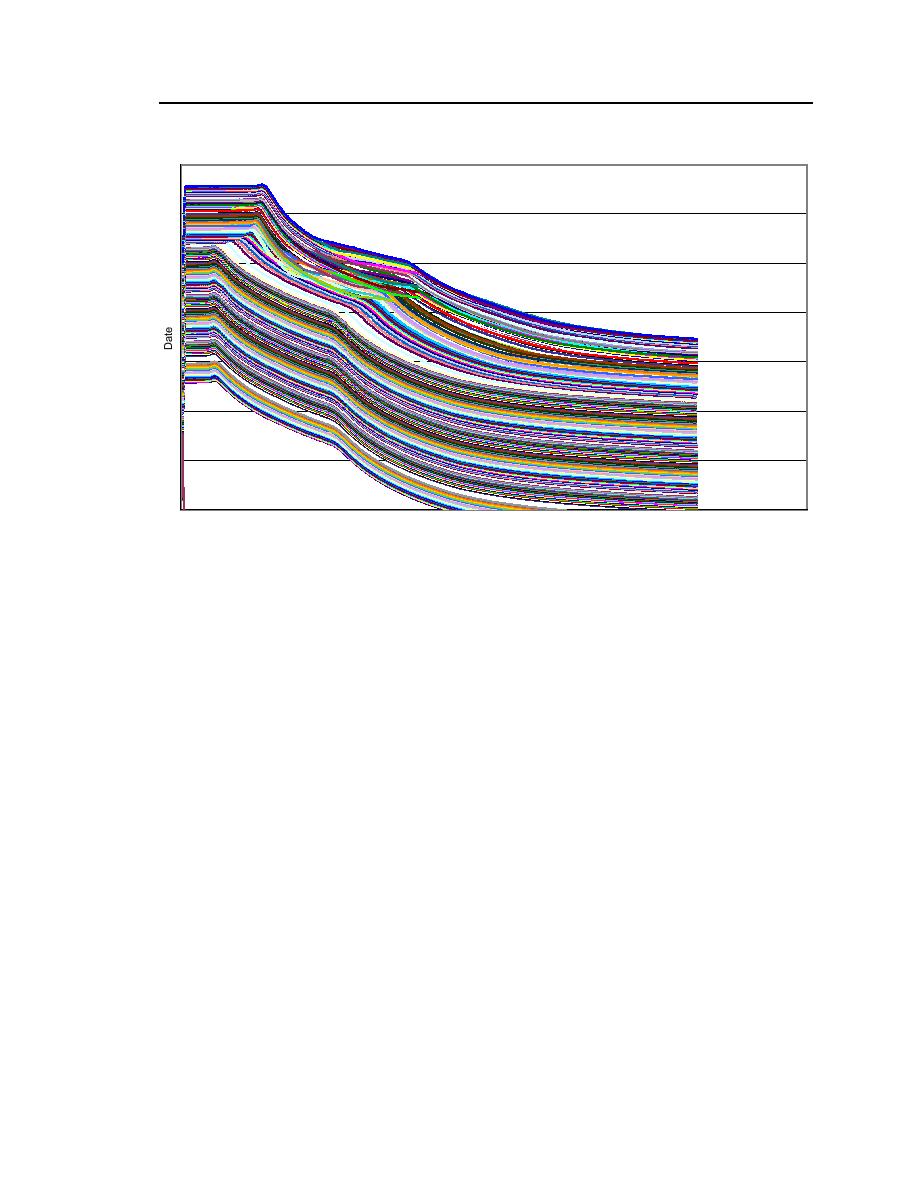
RIVER ICE INFLUENCES ON FORT PECK REACH, MISSOURI RIVER
75
April 1999
Jan 1999
Propagation time
Figure 52. Bed level changes at TDR 3 using the 1503.
longer. In the data acquisition mode the Tektronix is adjusted to the beginning of
the sample window using a pre-programmed electrical wire length, so an "elec-
trically" longer cable would offset the probe image in the sampling window. This
seems to have been the case for TDR 3, where the top of the waterfall plot drifts
to the right during breakup (Fig. 52). For TDR 6 (Fig. 53) the inflection point
representing the waterbed interface is missing from the images taken in March,
yet electrically the probe was still operational. The connection at the top of the
probes may have developed a leak, giving a very "noisy" return signal, as in TDR
7 (Fig. 54). The anchoring section of this probe was shortened, so the probe may
have been pushed over and reburied. Though some of the probes eventually
failed, the information they provided gave useful insights into the interaction
between the ice cover and sediment movement. The lesson learned will be
incorporated into future generations of the probe design.
Discussion
It is possible that a periodic cyclic shift occurs in the location of the main
thalweg at the Culbertson site. The shift, triggered by ice cover formation, swings
the dominant thalweg from the north subchannel to the south subchannel, then
back again. Incomplete observations, historic photographs, and anecdotal
accounts at this site and, for example, the Whitmer site (RM 1687) suggest that



 Previous Page
Previous Page
